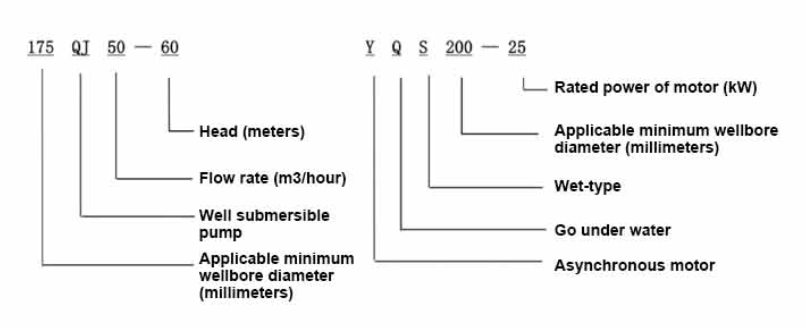Aug . 06, 2024 05:38 Back to list
Essential Guide to Choosing and Installing Your Underground Well Water Pump for Optimal Performance
Understanding Underground Well Pumps An Essential Resource for Water Management
Underground well pumps are crucial components in the systems that provide fresh water from underground aquifers to homes, farms, and various industries. These pumps facilitate the extraction of water from depths that are often beyond the reach of traditional surface water sources. As the demand for clean and reliable water sources continues to grow, the significance of efficient underground well pumping systems cannot be overstated.
The Basics of Underground Well Pumps
Underground well pumps, typically submersible pumps, are specifically designed to operate fully submerged in water. They are essential for accessing water located deep underground, where traditional pumps cannot reach effectively. These pumps consist of a motor and a pump unit and are installed at the bottom of the well. When in operation, the motor drives the impeller, which moves water to the surface through a discharge pipe.
There are primarily two types of underground well pumps submersible pumps and jet pumps. Submersible pumps are more commonly used for deeper wells, as they can operate at depths exceeding 300 feet. Jet pumps, on the other hand, are suitable for shallower wells (generally less than 25 feet) and work by creating a vacuum to draw water to the surface.
Key Considerations When Choosing a Pump
When selecting an underground well pump, several factors must be considered to ensure optimal performance. First, the depth of the well is critical. Deeper wells require pumps with higher horsepower and efficiency ratings. Second, the flow rate, measured in gallons per minute (GPM), should meet the specific water demand for the intended application, whether it be for household usage, irrigation, or industrial processes.
underground well pump

Additionally, the composition of the water, including its acidity and mineral content, can impact the type of pump suitable for use. For instance, corrosive water conditions may necessitate the use of pumps made from stainless steel or other corrosion-resistant materials. It's also important to consider the power source for the pump, as options may include electricity or solar power, particularly in remote areas.
Maintenance and Operational Efficiency
Once installed, regular maintenance of underground well pumps is essential to ensure their longevity and efficiency. This includes routine checks on electrical connections, monitoring for excessive wear and tear, and ensuring that all components are functioning correctly. It is also advisable to regularly test the water quality, as changes in water composition could indicate issues with the well itself or the surrounding environment.
Investing in a good quality underground well pump can pay off in terms of energy savings, especially with modern, energy-efficient models that are designed to operate quietly and effectively. Many manufacturers also offer monitoring systems that can alert owners to potential problems before they escalate, reducing downtime and costly repairs.
The Importance of Sustainable Water Management
As global water scarcity becomes an increasingly pressing issue, underground well pumps play a pivotal role in sustainable water management. They enable the responsible extraction and use of aquifer resources while minimizing the impact on the environment. Properly maintained and efficiently operated pumps help ensure that water supply remains steady for future generations while reducing dependence on surface water sources.
In conclusion, underground well pumps are vital tools for effectively managing water resources in various applications. Their efficiency, longevity, and importance in sustainable practices make them an essential consideration for anyone relying on groundwater. By understanding the factors that influence the selection and maintenance of these pumps, users can optimize performance and ensure a reliable water supply.
-
Submersible Water Pump: The Efficient 'Power Pioneer' of the Underwater World
NewsJul.01,2025
-
Submersible Pond Pump: The Hidden Guardian of Water Landscape Ecology
NewsJul.01,2025
-
Stainless Well Pump: A Reliable and Durable Pumping Main Force
NewsJul.01,2025
-
Stainless Steel Submersible Pump: An Efficient and Versatile Tool for Underwater Operations
NewsJul.01,2025
-
Deep Well Submersible Pump: An Efficient 'Sucker' of Groundwater Sources
NewsJul.01,2025
-
Deep Water Well Pump: An Efficient 'Sucker' of Groundwater Sources
NewsJul.01,2025
-
 Submersible Water Pump: The Efficient 'Power Pioneer' of the Underwater WorldIn the field of hydraulic equipment, the Submersible Water Pump has become the core equipment for underwater operations and water resource transportation due to its unique design and excellent performance.Detail
Submersible Water Pump: The Efficient 'Power Pioneer' of the Underwater WorldIn the field of hydraulic equipment, the Submersible Water Pump has become the core equipment for underwater operations and water resource transportation due to its unique design and excellent performance.Detail -
 Submersible Pond Pump: The Hidden Guardian of Water Landscape EcologyIn courtyard landscapes, ecological ponds, and even small-scale water conservancy projects, there is a silent yet indispensable equipment - the Submersible Pond Pump.Detail
Submersible Pond Pump: The Hidden Guardian of Water Landscape EcologyIn courtyard landscapes, ecological ponds, and even small-scale water conservancy projects, there is a silent yet indispensable equipment - the Submersible Pond Pump.Detail -
 Stainless Well Pump: A Reliable and Durable Pumping Main ForceIn the field of water resource transportation, Stainless Well Pump has become the core equipment for various pumping scenarios with its excellent performance and reliable quality.Detail
Stainless Well Pump: A Reliable and Durable Pumping Main ForceIn the field of water resource transportation, Stainless Well Pump has become the core equipment for various pumping scenarios with its excellent performance and reliable quality.Detail
